Choosing the right office seating is essential, particularly now staff wellbeing is being pushed to the top of the agenda. Despite the shift towards agile working practice and increased collaboration, your staff may still be spending up to 40 hours a week sitting down at a desk.
A good office chair can prevent the back strain, fatigue and discomfort that often comes with sitting down for long periods. And besides, comfortable employees are happier, more productive and more efficient at work.
Office chair ergonomics - the basics
Of course, you want your office to look good. Your employees want to work in an environment that excites and inspires them. You want to wow clients when they visit your workplace. But the ergonomics of your office chairs should be considered about everything else.
Lumbar support: A good ergonomic office chair will have support for the lower back. The best chairs will even have adjustable lumbar support that allows users to fit the chair to their lower back for maximum comfort. Sliding lumbar support, for example, can provide extra support for the lower back muscles.
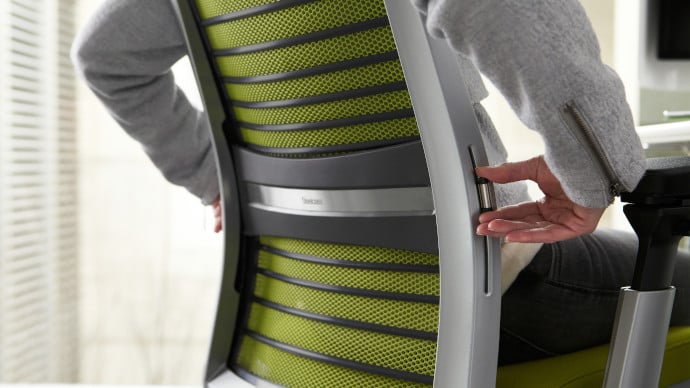
Adjustable features: Office chairs should be adaptable to suit the individual needs of the user, especially when it comes to seat height. If your chair doesn’t sit at the right height, you can find yourself straining or bending to look at your computer screen, and this can lead to neck, back and shoulder pain. Other adjustable features include height, width and depth adjustable arms, seat and back angle, and tension control.
Casters: Many office chairs have casters, and this is a must if you want people to be able to move around with ease. But the type of caster you need will depend on how the chair will be used and the type of flooring it will be rolling across. If your office has hardwood floors, soft casters are your best option as they can move easily along the surface. Hard casters are better suited to carpeted offices.
Swivel base: All office chairs should swivel freely to support easy movement and to help you reach different areas of the desk. Chairs that don’t swivel freely can lead to people overstretching or overextending their arms, which can result in injury or strain.
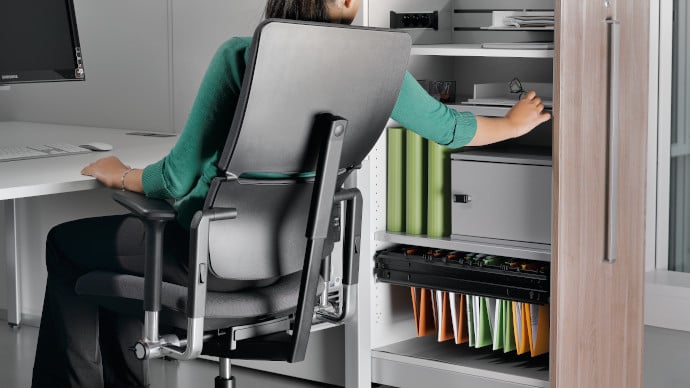
Fabric: Breathable fabric helps keep the chair from becoming hot and uncomfortable. The cushioning should be thick enough that the user can’t feel the base of the chair through it. If you already have good ergonomic chairs, but they are a bit tired, simply refreshing the seat pads can give the impression of a new chair without compromising its ergonomic performance.
Comfort - the number one priority
Providing a comfortable working environment for everyone should be at the top of the agenda when choosing office seating.
Comfortable chairs will keep your employees focused, productive and able to work for longer and more sustained periods.
Key to this is having a chair that can be adjusted to suit the needs of the individual user. This is why adjustable lumbar support, seat height, arm height and tension control are really important. Some chairs are even designed to adjust intuitively as a user moves, such as the Think chair by Steelcase.
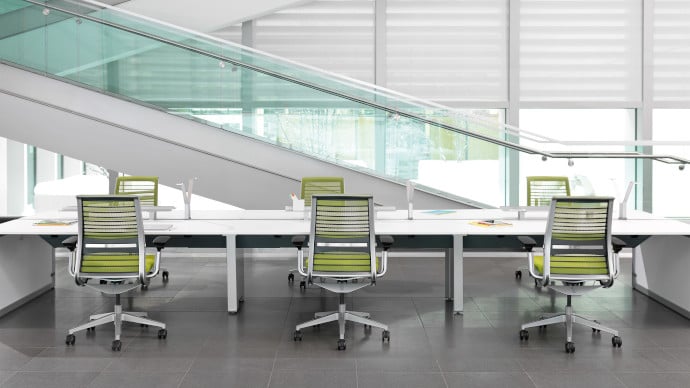
Agile seating options - flexible seating solutions to suit the changing needs of a team
Office seating solutions that let people switch quickly from group to individual tasks and back again, support the agile working practices that are synonymous with office culture today.
Flexible seating solutions may include benches, chairs and stools that can easily be re-configured to suit the changing needs of a team throughout the day.
A supportive and ergonomic chair enables people to sit comfortably as they focus on individual work. When collaborating, seating options like stools pushed together around a high table, can encourage movement and spark the creative energy that will enable innovative ideas to blossom.
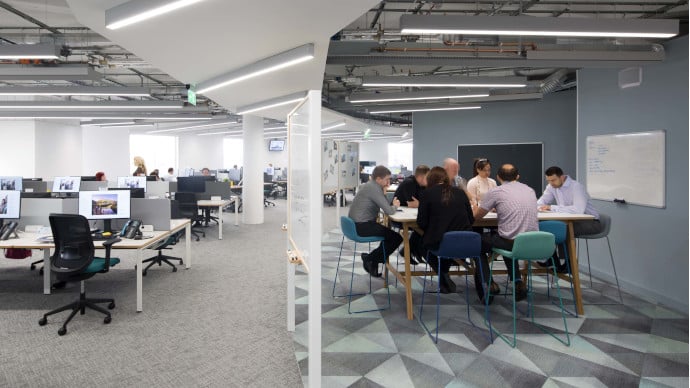
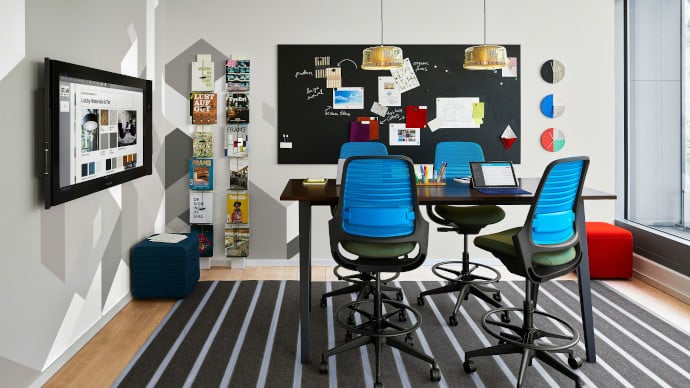
Beyond the workstation - office seating to support both lounging and ergonomics
Design trends are increasingly moving towards office spaces that support people in the shifting range of contemplative, collaborative and focused tasks that make up their working life. And the best office seating solutions will look different in each of these spaces.
We’ve already touched on how office seating requirements differ between collaborative and focused tasks. And when we reach contemplative spaces, the needs shift again. Office seating that supports lounging can make contemplative spaces more relaxing and rejuvenating for staff, while also aiding creative thinking. Options might include soft chairs and day beds.
Lounge seating doesn’t have to mean a compromise on posture and support. The Brody WorkLounge by Steelcase, for example, provides both comfort and support by bringing thoughtful ergonomic design to the lounge posture.
In breakout areas, seating should support both relaxation and social conversation. Comfortable sofas where people can sit together or alone create a space that works for everyone.
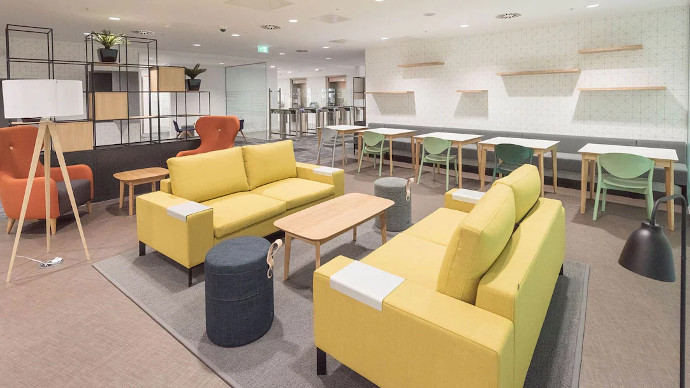
Size matters - finding the best seating solution for your space
When UKTV added enormous curved orange sofas to their new office in West London, their intention was to create a stimulating space “built for innovation”. But not everyone has the space to make such a bold statement.
How much space you have to play with is a key consideration when thinking about office seating. If you’re in a small office, big bulky office chairs could make the space feel cramped or restrict workers from moving around freely. That said, there are ways you can arrange your furniture to help make your office look more spacious. But before you make any decisions, you will need to know the dimensions of your office so you can find a solution that maximises the space you have.
Summary
Supportive and ergonomic office seating can prevent back strain, fatigue and discomfort. And comfortable employees are more productive and contribute more to a positive work environment.
Comfort and support should be your top priority when choosing office seating. At the workstation, this means selecting chairs with adjustable features that support movement.
In an agile workplace, it’s also essential to have a variety of seating options to support the changing needs of teams from focused work to collaboration. This might mean stools, benches, and other chairs that help bring people closer together.
Moving into contemplative spaces and breakout areas, seating that enables lounging while still being ergonomic and supportive can help people to relax and rejuvenate.
When considering your options, bear in mind the size of your office space and how you can maximise that space to create the best working environment for your staff to thrive.









